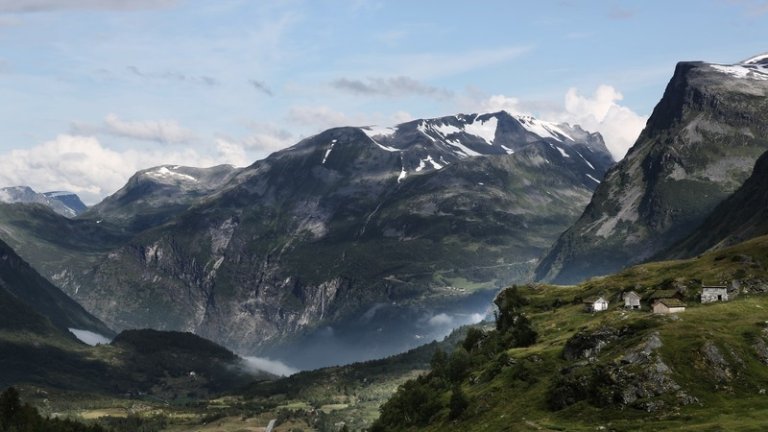In the remote Arctic landscapes of Norway’s Svalbard archipelago, a remarkable story of transformation is unfolding. The once-thriving Svea mine, which bore witness to the extraction of 34 million metric tonnes of coal over its long history, is now undergoing a profound change as it is returned to the embrace of nature. This ambitious endeavor, recognized as one of Norway’s largest-ever natural restoration projects, symbolizes a broader shift in the region away from its mining legacy towards a more sustainable and environmentally conscious future.
A Century of Industry and Innovation
Founded in the year 1917, the Svea mine stood as a testament to a bygone era of industrial prowess in the heart of Norway’s Arctic wilderness. Over the decades, this mining complex burgeoned into a bustling hub of activity, teeming with the energy of thousands of dedicated workers. The landscape was transformed with essential infrastructure, strategically positioned to support the mining operations. The site featured not just the machinery of industry but also the heartbeat of a community—a canteen, airfield, power plant, and workshop. As the mine reached its zenith, it became a symbol of innovation and human determination in the unforgiving Arctic terrain.
The Unraveling Tapestry of Time
Fast forward a century, and the echoes of Svea mine’s industrial symphony have faded. The once-thriving mine, now a silent witness to the passage of time, witnessed its productive life come to an end. The overgrown railway tracks, once the arteries of industry, now lead to nowhere. Amidst the expansive wilderness, only a handful of historically significant structures remain, reminiscent of an era when Svea mine was at the forefront of coal production. It’s a poignant reflection on the cyclical nature of industry and the inevitability of change.
A Commitment to Conservation
The decision to embark on the restoration journey of the Svea mine is a manifestation of Norway’s unwavering commitment to preserving the natural beauty of Svalbard. Espen Barth Eide, former environment minister, articulates the importance of returning areas previously shaped by industrial activities to their original, untouched state. This commitment extends beyond mere rhetoric, with a substantial investment of around 1.6 billion Norwegian kroner (€1.35 million) allocated to the restoration project.
Nature’s Symphony
At the helm of this ambitious endeavor is Hagen Johansen, head of the Norwegian Directorate for Cultural Heritage, who sheds light on the restoration philosophy. The overarching concept is elegantly simple—allow nature to reclaim what was once hers. Johansen envisions a harmonious coexistence by letting creeks flow freely, permitting avalanches to transport sediment, and encouraging the creation of new watercourses. It’s a vision where the forces of nature are not suppressed but embraced, aligning seamlessly with the broader objective of preserving the delicate ecological balance in the face of evolving environmental challenges.
The Svea mine’s transformation becomes more than just a restoration project; it evolves into a symphony, where the instruments are the elements of nature and the composition is the revitalization of a once-industrial landscape. As creeks meander and avalanches sculpt, the landscape begins to dance to the rhythm of a revitalized ecosystem. The restoration of Svea mine emerges not only as an environmental initiative but also as a celebration of nature’s resilience and ability to heal the scars of human activity.
Svalbard’s Shifting Landscape
The Svea mine restoration is part of a broader trend in Svalbard, where the warming of the Barents Sea is occurring up to seven times faster than the global average. The archipelago is gradually distancing itself from the fossil fuel industry, with seven other mines in the hills of Longyearbyen already closed, and the final one set to shut its doors in 2025. Concurrently, the town has disconnected its coal power station, paving the way for a transition to renewable energy sources.
As Svalbard’s economy shifts, the focus turns to tourism and scientific research, envisioning a future that embraces sustainability. However, opinions on this transition vary, with some celebrating the move away from mining, while others, like glaciologist Andrew Hodson, express skepticism, questioning the authenticity of Norway’s green image.
The Role of International Relations
Amidst these changes, the Russian mining community of Barentsburg remains a unique player, continuing coal mining activities on the archipelago. An international treaty recognizing Norway’s sovereignty over Svalbard allows all signatories to exploit the region’s resources equally. However, strict environmental protections introduced in the region raise questions about the motives behind such measures, with some suggesting they aim to limit exploitation.
While it’s unclear if these considerations influenced Oslo’s decision to restore the Svea mine at great cost, it is undeniable that Norway’s environmental and geostrategic policies on Svalbard are intricately linked. Mats Kirkebirkeland of the Norwegian think tank Civita highlights the alignment of these policies, suggesting a nuanced relationship between environmental consciousness and geopolitical strategy.
Conclusion
The restoration of Svea mine stands as a testament to Norway’s commitment to environmental preservation in the face of climate challenges. As Svalbard pivots away from its coal mining past, the region navigates a delicate balance between sustainable development and economic interests. The transformation of Svea mine serves not only as a symbol of nature’s resilience but also as a reflection of the broader global shift towards a more ecologically conscious future.

